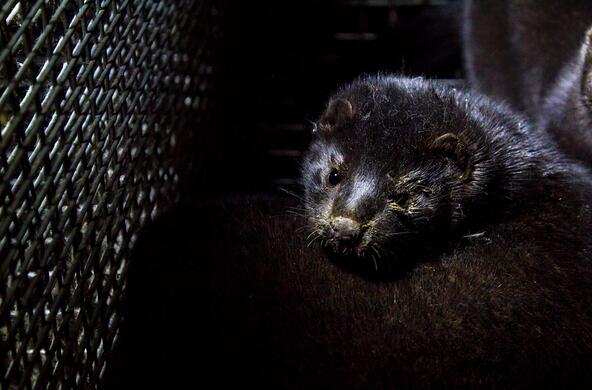When, where, and why do diseases jump from animals to people? A new project will monitor how changing seasons, land use, and human behavior influence viral outbreaks in wild rodent populations, to identify hotspots with high potential for spillover into people. The project is co-led by Barbara Han, a disease ecologist at Cary Institute of Ecosystem Studies, in an international team of scientists from the Smithsonian Institution, Royal Veterinary College, Oxford University, and the University of Glasgow.
Until now, it has been difficult to study how changing environmental conditions impact virus transmission in the wild. With $2.9 million in funding from the National Science Foundation, and an additional $1.9M in support from the UK’s Biotechnology and Biological Sciences Research Council, the new project overcomes this challenge by combining traditional disease ecology methods with the recently proven tool of metaviromics.
Unlike other genetic sequencing techniques, which are quite targeted, metaviromics will allow the team to scan for a broad array of viruses in rodents, and see how they’re changing over time and space, said Han. The study will focus on RNA-based viruses — such as coronavirus, hantavirus, and enterovirus — many of which pose an elevated risk to humans.
“This study will be an important test of the use of metaviromics for spotting the potential for new epidemics,” notes Samuel Scheiner, Program Director for the Division of Environmental Biology at the National Science Foundation. “The methods developed here potentially have very wide applicability across many pathogens.”
Viruses are most likely to jump from animals to humans when animal hosts have high viral loads and frequent contact with people, explained James Hassell, a wildlife veterinarian and epidemiologist for the Smithsonian’s National Zoo and Conservation Biology Institute’s Global Health Program. “And the chances of a virus reaching high levels or potentially infecting people depends on the season, how dense the animal populations are, and how frequently they're coming into contact with people.”
The team will explore these dynamics in wild rodents and the viruses they carry in both the UK and Eastern Uganda. The project focuses on rodents because they are responsible for more zoonotic diseases than any other mammalian order. Many rodent species live in close proximity to people and are highly responsive to environmental change.
Field work is a large component of the project; it includes trapping rodents, tagging them, and collecting fecal samples for viral RNA extraction. Radio frequency identification tags will help the researchers track the health and viral loads of individual rodents, and to estimate their movement, range, and social contacts.
To identify key drivers of virus transmission in seasonal environments, the team will track wood mice (Apodemus sylvaticus) in Wytham Woods in the UK for three years.
The Eastern Uganda site, where forests are being converted into agricultural fields, will help reveal the impact of changing land use on rodent populations and viral dynamics. Rodents will be monitored across different types of landscapes, from forests to fields and villages. The team will also estimate how frequently people are coming into contact with rodents through questionnaires, household rodent infestation measurements, and by human movement and land use activity data.
“These kinds of human-animal contact data are difficult to obtain, but could give us a powerful new perspective on pathogen transmission at a complex interface spanning different environments and seasons,” says Christina Faust of the University of Glasgow, who is leading the work in Uganda in collaboration with in-country partners.
Artificial intelligence will be used to parse how these factors and others interact to influence virus abundance and spillover risk. “Machine learning is a really powerful way to look at data from a different perspective,” Han notes, “and it reveals patterns that you might otherwise not be able to see.”
Adds Jayna Raghwani from Royal Veterinary College: “Combined with mathematical modeling, the metaviromics data get us closer to both quantifying and predicting when viruses actually emerge in the wild.”
Findings will inform disease surveillance efforts in changing environments, helping to spot emerging diseases before they turn into pandemics, and guiding strategies to reduce spillover risk.
“This project is fundamental to being able to make better, more actionable predictions about viral emergence at scales where management can actually mitigate disease emergence,” said Han.








